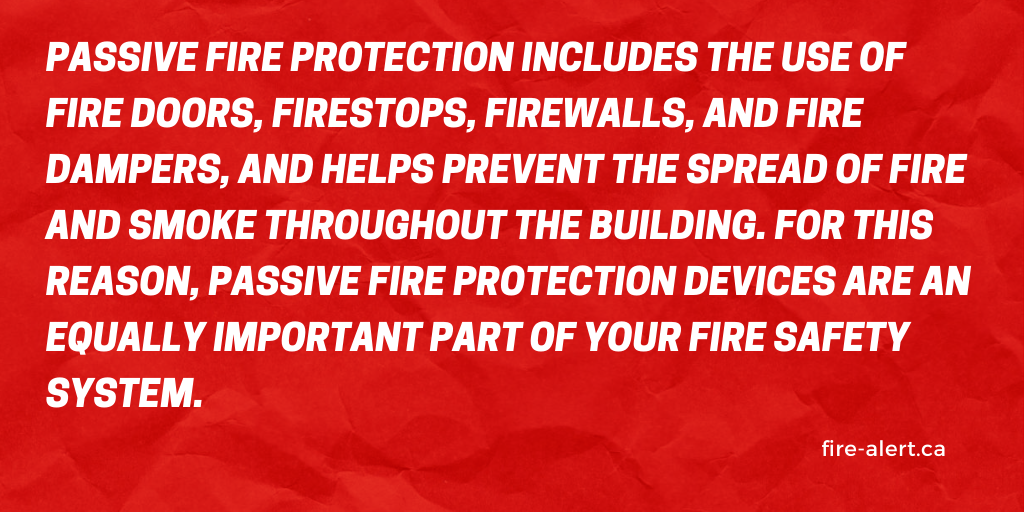What is the Difference Between Active and Passive Fire Protection?
While having adequate fire protection in every building has always been important, the realization of this importance has only grown throughout the years. And while we tend to think that our fire protection systems are completely covered by the inclusion of a fire alarm and a fire extinguisher, this is often not the case. In fact, two entirely separate types of fire protection are designed to come together for full fire protection: Active Fire Protection (AFP) and Passive Fire Protection (PFP). In this article, we take a look at the difference between active and passive fire protection, so you can be confident that your building is completely protected at all times.
Active Fire Protection
Due to the action of actively extinguishing the fire, fire suppression systems are the most obvious examples of Active Fire Protection, with fire alarm systems also being an important part of AFP. And although active fire protection devices may be the most common way to protect your household or commercial building, they should only be part of your fire safety system.
Marco Protection Systems tells us more about how active fire protection works:
“Active Fire Protection consists of the components of fire protection that require some kind of action to work. This action may be manual, like using a fire extinguisher, or automatic like the sprinkler system dousing flames. The action that results from active fire protection is triggered by some sort of alert or signal. The action itself will help contain, suppress, or extinguish a fire that has already started.”
Passive Fire Protection

Passive fire protection includes the use of fire doors, firestops, firewalls, and fire dampers, and helps prevent the spread of fire and smoke throughout the building. For this reason, passive fire protection devices are an equally important part of your fire safety system.
Koorsen Fire & Security explains more about the importance of passive fire protection:
“Passive Fire Protection (PFP) also plays an integral role in a comprehensive fire safety system. PFP systems rely on compartmentalization to protect people and minimize damage in the event of a fire. They work by slowing the spread of fire and smoke from one area of a building to another, giving occupants more time to escape and confining the fire where possible.”
Which is Better?
So, which method of fire protector is better, active or passive? The answer is simple: neither. Both fire protection systems must be enforced in either to work together, and neither should be made a priority over the other.
Firetrace tells us why both active and passive fire protection must work together to create a full fire protection system:
“One system is not better than another. Both active and passive fire protection play a key role in protecting buildings, equipment, and people. Passive fire protection is about containing the fire while active fire protection is about stopping the fire. While the systems work independently, but both systems need to be functioning properly to suppress and stop a fire.”
Fire-Alert takes pride in equipping homeowners, commercial businesses, and government buildings with all necessary fire safety devices to ensure the well-being of families and employees across the nation. Reach out to us using our contact form to find out more.